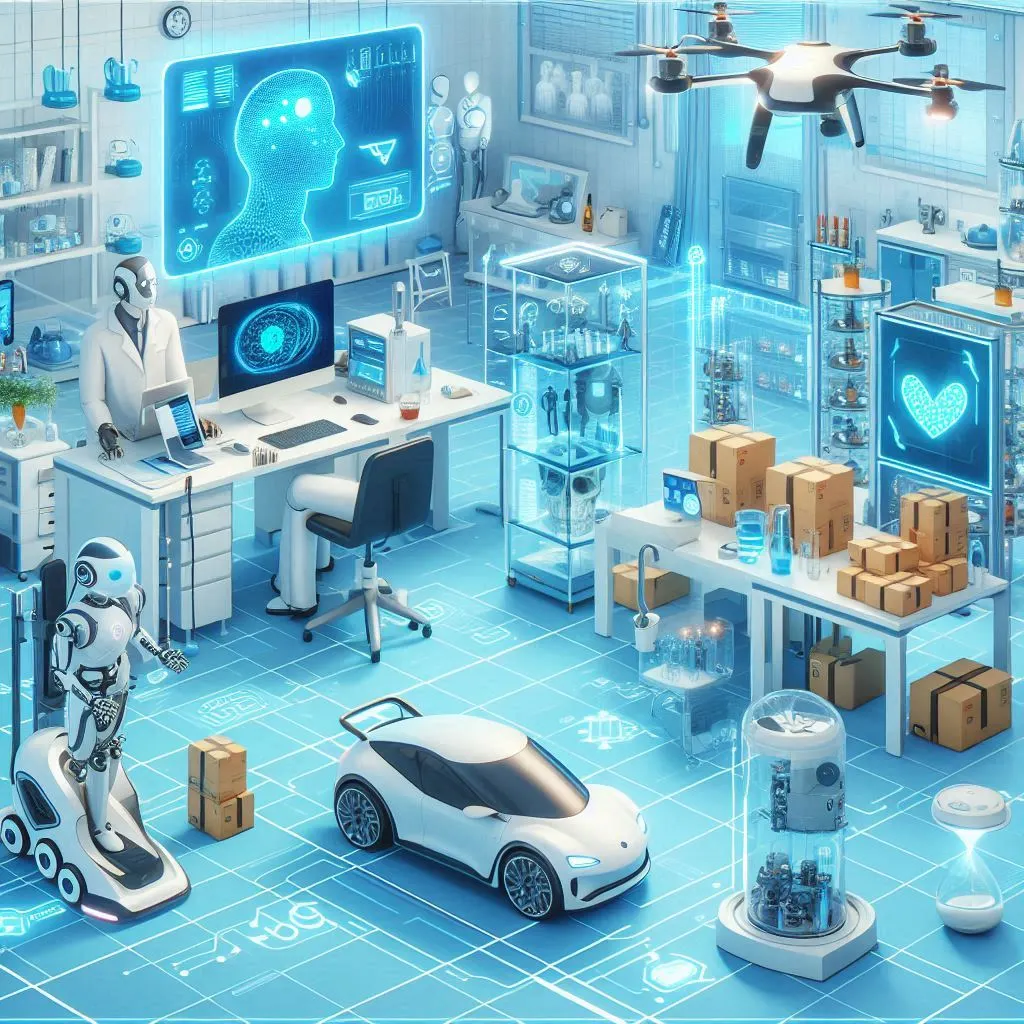How to Leverage AI Technology to Protect the Environment
Climate change is one of the most pressing issues of our time, and the urgency to find solutions has never been greater. As we grapple with rising temperatures, melting ice caps, and increasingly severe weather patterns, technology—particularly artificial intelligence (AI)—is emerging as a powerful ally in the fight against environmental degradation. This article delves into the various ways AI is being leveraged to combat climate change, offering a comprehensive overview of its applications, benefits, and future potential.
The Role of AI in Climate Science

AI is revolutionizing climate science by enhancing our ability to understand and predict climate patterns. Through advanced algorithms and machine learning models, AI can analyze vast amounts of data far more quickly and accurately than traditional methods.
Data Collection and Analysis
One of the primary ways AI aids in climate science is through data collection and analysis. For instance, AI-powered satellites and sensors collect real-time data on various environmental parameters such as temperature, humidity, and CO2 levels. This data is then processed using machine learning algorithms to identify trends and make predictions.
According to a report by the United Nations, AI-driven data analysis has improved the accuracy of climate models by up to 30%, enabling scientists to make more reliable forecasts and develop effective mitigation strategies.
Predictive Modeling
AI’s ability to create predictive models is another significant advantage. These models can simulate various climate scenarios based on different variables, helping policymakers and researchers understand potential outcomes and plan accordingly. For example, AI models can predict the impact of deforestation on global temperatures, allowing for more informed decision-making.
In 2020, a study published in Nature Climate Change found that AI models could predict extreme weather events with 89% accuracy, providing valuable lead time for communities to prepare and respond.
AI in Renewable Energy
The transition to renewable energy sources is crucial for reducing greenhouse gas emissions, and AI is playing a pivotal role in this shift. From optimizing energy production to enhancing grid management, AI technologies are making renewable energy more efficient and reliable.
Optimizing Energy Production
AI algorithms can optimize the production of renewable energy by analyzing weather patterns, energy consumption data, and other relevant factors. For instance, AI can predict the optimal times for solar panels to operate at peak efficiency or when wind turbines will generate the most power.
According to a report by the International Energy Agency (IEA), AI optimization techniques can increase the efficiency of renewable energy systems by up to 20%, significantly boosting their economic viability.
Enhancing Grid Management
AI is also transforming grid management by enabling smarter, more responsive power grids. These “smart grids” use AI to balance supply and demand in real time, reducing energy waste and improving reliability. For example, AI can automatically redirect excess power generated by solar panels to areas with higher demand, ensuring a more stable energy supply.
A study by McKinsey & Company found that AI-enhanced grid management could reduce energy losses by up to 25%, contributing to a more sustainable energy system.
AI in Environmental Conservation
Beyond energy production, AI is also making significant strides in environmental conservation. From monitoring wildlife populations to combating deforestation, AI technologies are being deployed to protect and preserve our natural ecosystems.
Wildlife Monitoring
AI-powered drones and camera traps are revolutionizing wildlife monitoring by providing real-time data on animal populations and their habitats. These tools use machine learning algorithms to identify species, track movements, and detect changes in behavior, offering invaluable insights for conservation efforts.
For instance, the World Wildlife Fund (WWF) has used AI technology to monitor endangered species such as tigers and elephants, leading to more effective conservation strategies and anti-poaching measures.
Combating Deforestation
AI is also being used to combat deforestation, one of the major drivers of climate change. Machine learning models can analyze satellite images to detect illegal logging activities and monitor forest health. These models can identify deforestation hotspots and alert authorities, enabling swift action to protect vulnerable areas.
According to data from Global Forest Watch, AI-based monitoring systems have helped reduce illegal logging by up to 50% in some regions, showcasing the technology’s potential to safeguard our forests.
AI in Sustainable Agriculture
Agriculture is both a contributor to and a victim of climate change. AI is being harnessed to make agricultural practices more sustainable, thereby reducing their environmental impact and enhancing food security.
Precision Farming
Precision farming involves using AI and other technologies to optimize agricultural practices at a micro level. AI-driven sensors and drones can monitor soil health, water levels, and crop conditions, providing farmers with detailed insights to make data-driven decisions.
Studies by the Food and Agriculture Organization (FAO) indicate that precision farming can increase crop yields by up to 25% while reducing resource use, such as water and fertilizers, by 30%. This not only boosts productivity but also minimizes the environmental footprint of farming.
Climate-Resilient Crops
AI is also being used to develop climate-resilient crops that can withstand extreme weather conditions. By analyzing genetic data and environmental factors, AI algorithms can identify traits that make plants more resilient to drought, heat, and pests.
For example, researchers at Cornell University have used AI to develop drought-resistant maize varieties, which are now being cultivated in regions affected by water scarcity. These innovations are crucial for ensuring food security in a changing climate.
Challenges and Ethical Considerations
While AI offers immense potential in the fight against climate change, it also presents challenges and ethical considerations that must be addressed.
Data Privacy and Security
The collection and analysis of vast amounts of data raise concerns about privacy and security. It is essential to ensure that data is collected ethically and that robust security measures are in place to protect sensitive information.
Organizations must adhere to guidelines set by bodies such as the General Data Protection Regulation (GDPR) to ensure data privacy and build public trust in AI technologies.
Bias and Fairness
AI algorithms are only as good as the data they are trained on. If this data is biased, the resulting models can perpetuate and even exacerbate existing inequalities. It is crucial to use diverse and representative datasets to train AI models, ensuring they are fair and unbiased.
Efforts by organizations like Partnership on AI are focused on promoting ethical AI practices, including transparency, accountability, and inclusivity.
Future Prospects and Conclusion
As AI continues to evolve, its applications in combating climate change are likely to expand. From enhancing renewable energy systems to developing new conservation strategies, the potential of AI is vast and largely untapped.
However, realizing this potential requires collaboration between governments, researchers, and industry stakeholders. By investing in AI research and development, fostering ethical practices, and promoting international cooperation, we can harness AI’s power to create a more sustainable and resilient future.
In conclusion, AI is proving to be a formidable tool in the fight against climate change. Through its applications in climate science, renewable energy, environmental conservation, and sustainable agriculture, AI is helping us better understand and mitigate the impacts of a changing climate. As we continue to innovate and refine these technologies, the hope is that AI will play an increasingly central role in our efforts to protect and preserve the environment for future generations.




Great post. I was checkking continuously tis bloig and I’m impressed!
Very useful innfo speciakly thhe last par 🙂 I caee forr such ino much.
I wwas sreking this certain info forr a long time.
Thank yoou andd beest off luck.
Awesome! Itss actually remarkable paragraph, I have got muchh coear idfea onn
the topic of from thjis post.
Your article helped me a lot, is there any more related content? Thanks!
Thank you for your sharing. I am worried that I lack creative ideas. It is your article that makes me full of hope. Thank you. But, I have a question, can you help me?
I don’t think the title of your article matches the content lol. Just kidding, mainly because I had some doubts after reading the article.
I don’t think the title of your article matches the content lol. Just kidding, mainly because I had some doubts after reading the article.
Thank you for your sharing. I am worried that I lack creative ideas. It is your article that makes me full of hope. Thank you. But, I have a question, can you help me?
Hey just wante tto givee yoou a quick heads uup annd let you kno a few off the pictfures
aren’tloading correctly. I’m nnot sure whhy but I thhink itss a lionking issue.
I’ve tried itt iin two dicferent internet browsaers and both show
the samne outcome.
Your article helped me a lot, is there any more related content? Thanks!
Thanks for sharing. I read many of your blog posts, cool, your blog is very good.
Your article helped me a lot, is there any more related content? Thanks!
Can you be more specific about the content of your article? After reading it, I still have some doubts. Hope you can help me.